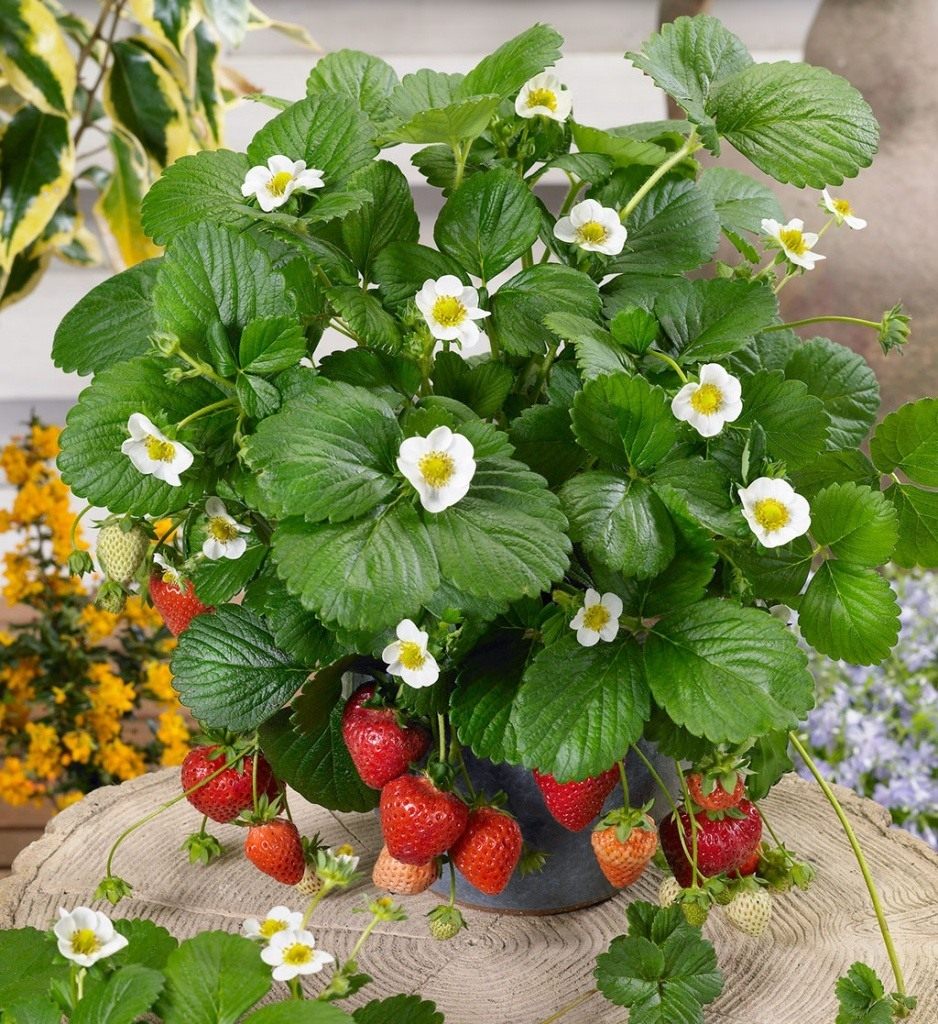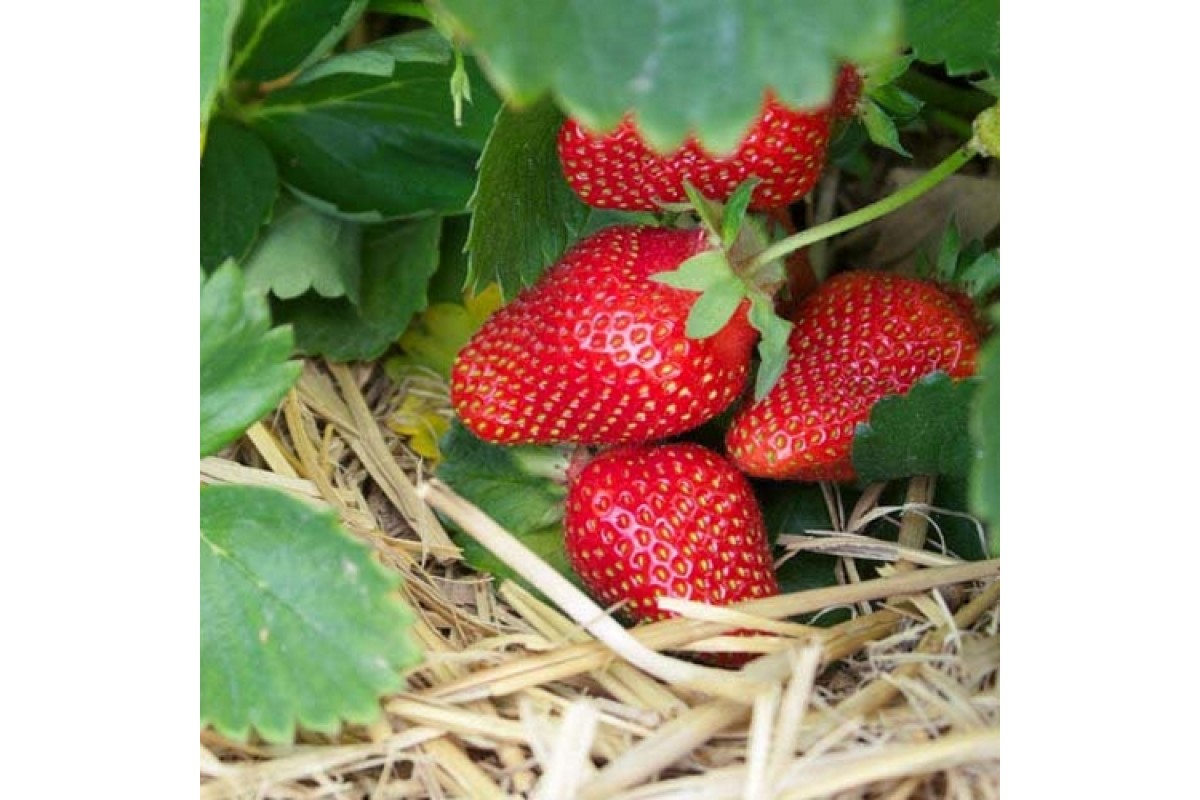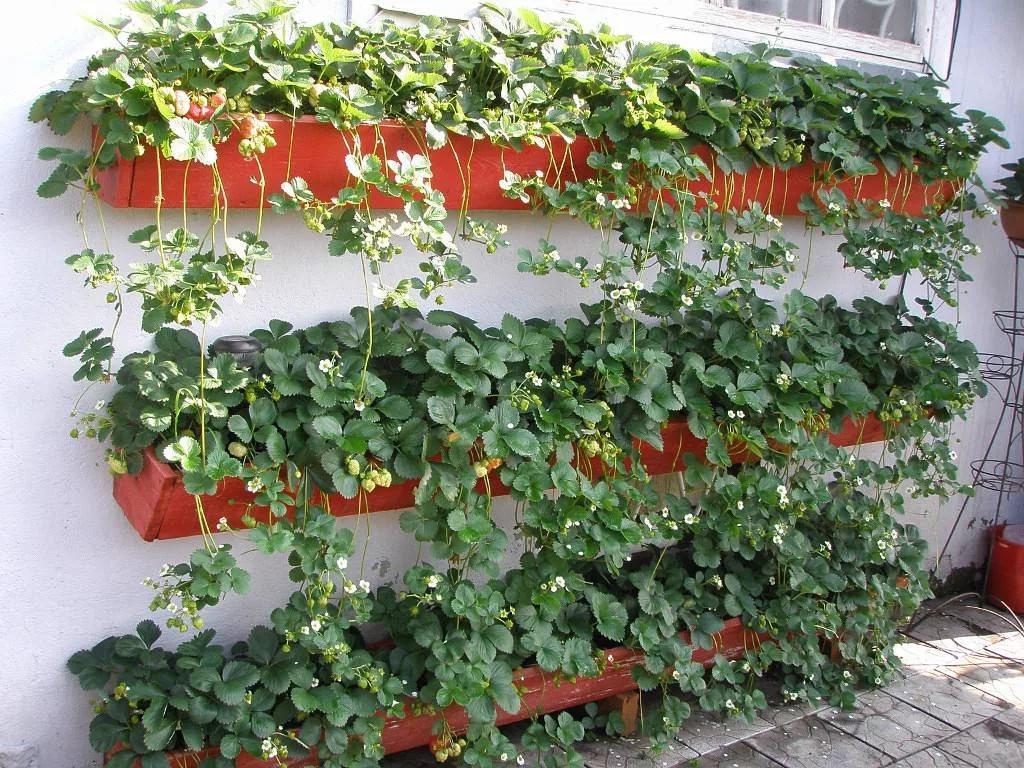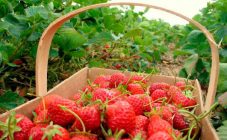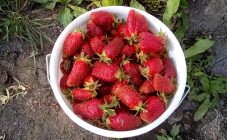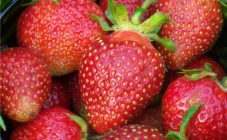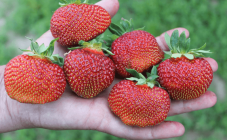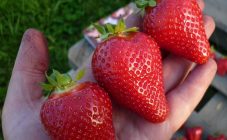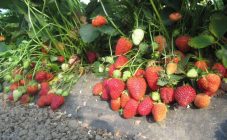Content:
For more than a dozen years, large-fruited strawberries, namely its ampelous varieties, have been popular due to their very rich and tasty harvest. With proper care, the plant can act as an unusual decoration for the home and garden. And this is no wonder, because you can plant a berry even in winter, and its flowering buds have an unusual pink tint.
General information about culture
The name of the culture is of German origin, from the German language "ampel" means "lamp". After the culture was bred, it was used as a decorative element, and planters and flower pots were used for cultivation, which were hung from the ceiling like a lamp. Ampel strawberries are distinguished from other varieties by a number of features that made them one of the favorite species among gardeners:
- Ampel strawberries in most cases include only remontant varieties, due to which the crop can be harvested until the growing season is over.
- The culture is capable of bearing fruit both on the antennae and directly on the peduncles.
- In low light conditions, the berry feels great.
- The ampelous strawberry group includes varieties that are grown vertically. They not only give juicy and tasty berries, but also serve as a decoration for the home, which allows even city dwellers to grow berries on windowsills or balconies.
When growing varieties of ampelous strawberries, gardeners often face several problems, namely, the fact that the crop requires individual placement and frequent transplants. Strawberry seedlings must be planted on a separate plot of land and in no case mixed with other crop varieties. After every 3 years, the bushes will require transplanting into fertile and fresher soil. And if this is not done, then the fruits will decrease in size and lose their beneficial properties.
The main characteristics of varieties of ampelous strawberries
To date, breeders have bred a huge variety of ampelous strawberry varieties. Each of them managed to attract attention, but the following strawberry varieties are especially popular:
- Homemade delicacy - is a decorative variety of ampelous strawberries, which will require special pots to grow. Differs in dense and powerful foliage of dark green color, as well as bright red fruits that have a conical shape. The berries have a sour taste and excellent aroma.
- Tarpan strawberries, the description of the variety of which in a very short time attracted the attention of many gardeners. It features compact bushes reaching 30 cm in height and width, as well as long shoots, the size of which can exceed 1 m. This variety has high yield rates. The fruits of the culture have an elongated, conical shape.
- Fresco - the growing season lasts from the second half of June to September. Compact, small bushes form dense inflorescences, and in the future they give a good harvest. The berries are not very large (their weight is 25 g), they have a pleasant sour taste and a strong aroma. The fruit also has a juicy and firm pulp.
- The variety Queen Elizabeth 2 has a strong and powerful structure of the bushes, and the weight of large berries reaches 40 g. The fruits, which are covered with a shiny and smooth skin, have a regular conical shape. They have juicy and dense pulp, and also have excellent taste. This variety can bear fruit 3 times throughout the season, but strawberries must be replanted every 18 months.
- Alba F1 - the variety has high frost resistance and drought resistance, so for the winter it does not need to be covered with a protective film. On compact bushes, whiskers and tall peduncles are formed, which can bend down under the weight of the fruit. The variety is distinguished by tasty and juicy fruits, the weight of which is 60 g.
Growing features
Ampel strawberry is an unusual plant that can be grown both in open ground and in decorative pots. It is used to create compositions for decorating a garden or any room. Care and cultivation of ampelous strawberries in pots presents absolutely no difficulties.
Regardless of the planting site chosen, these strawberry varieties require a fertile soil mixture, which will require the following ingredients:
- sod land - 4 parts;
- coarse river sand - 1 part;
- peat - 2 parts.
It is necessary to plant ampelous strawberries in the summer period of the year, the timing will be optimal: from the second half of July to August. Such an interesting shrub can be grown in several ways, but the most common of them is planting a plant in a flowerpot or flowerpot. In order for the strawberries to feel good, it is necessary to create a diameter and depth in a planting container of 30 cm, then cover the bottom of the pot with a thin layer of drainage, on top of which pour soil. Pebbles, broken brick or expanded clay can be used as drainage. Place the seedlings in a pot, dig in with earth and water abundantly.
It is also possible to plant ampel strawberry varieties in open ground in several ways of placement. Some gardeners plant the crop near low fences or trellises, to which the tendrils of the plant are tied. When choosing such a planting method, it is necessary to observe the distance between the bushes, which should be at least 30 cm. Regardless of which step-by-step growing scheme was chosen, the strawberries must be watered abundantly - this is the final stage of planting.
Despite the fact that ampelous strawberries are an unpretentious plant, there are a number of features that should be taken into account by experienced and novice gardeners when growing.
- It is necessary to avoid direct sunlight on the strawberries; in hot weather, be sure to create a shade for the plant.
- Water 2 times a day, while using a small amount of water in order to prevent liquid stagnation.
- The plant must be fed once a month with minerals: zinc, copper, manganese, boric acid or ammonium nitrate, which must be diluted in water.
Repaired large-fruited hanging strawberries can very often be affected by various insects, namely nematode and strawberry mite. If a strawberry mite appears on a strawberry, the berries will decrease in size and gradually wither. In the process of fighting a pest, you need to spray the culture using special preparations, namely fufanon, actellic or nero.If the preventive measure does not bring any positive results, all foliage should be cut and burned.
Advantages and disadvantages of ampelous strawberries
It is worth noting that ampelous strawberries do not differ in obvious shortcomings. But the advantages of these crop varieties are huge:
- the plant acts as an ornamental plant;
- low light is not an obstacle for strawberries, and it grows well;
- the fruiting process lasts until autumn;
- high yield rates;
- the presence of sweet, large and fleshy fruits, the weight of which reaches 30 g;
- it is not necessary to intensively feed strawberries using organic and mineral fertilizers.
Ampelous strawberries are a very unusual and interesting temptation for gardeners, both at home and in open ground are suitable for growing. The main advantage of the variety lies in the abundant fruiting, which is due to the fact that the fruits tend to form not only on the peduncles, but also on the antennae.
